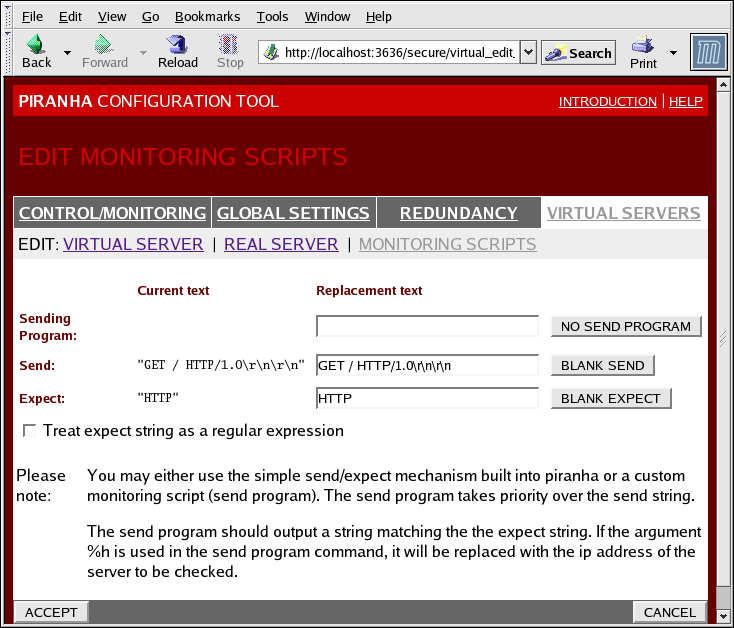


%h after the path to the script in the Sending Program field. This token is replaced with each real server's IP address as the script is called by the nanny daemon.
#!/bin/sh TEST=`dig -t soa example.com @$1 | grep -c dns.example.com if [ $TEST != "1" ]; then echo "OK else echo "FAIL" fi
nanny daemon to send to each real server in this field. By default the send field is completed for HTTP. You can alter this value depending on your needs. If you leave this field blank, the nanny daemon attempts to open the port and assume the service is running if it succeeds.
telnet connection to the port on a real server and see what is returned. For instance, FTP reports 220 upon connecting, so could enter quit in the Send field and 220 in the Expect field.